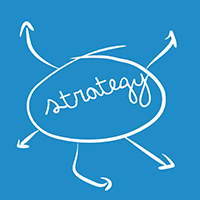Podcast: Play in new window | Download | Embed
Today’s Guest
Welcome to the 9th episode of Smart Brand Marketing with Tom Libelt.
In this session of The Smart Brand Marketing Podcast we go into why it is so crucially important to niche down in your business. Our guest, Jason Swenk, used this exact technique to build up his agency to 14 million in revenue and sold it.
Niching Things Down: Why it’s Important And Everything Else You Need to Know About It
When you start your own business, you can be tempted to approach every facet of it with a mass market appeal mentality. After all, there should be no harm in targeting a wide range of people with your strategies if it means bringing in more attention to the business, right?
Perhaps this is not the first time you have heard this but doing that tends to be counterproductive. It’s an all-too-common pitfall in business that many have, well, fallen into. It’s one way of quickly losing traction in the market, too, if you are not careful.
So, the obvious alternative is to find a niche but how does one do this? To answer that, let’s take a look at a few things first.
What Niching Isn’t
It’s common with every popular subject ever to have some misconceptions here and there. There are just so many people out there that believe some things about niching which turn them off from the entire thing. Since they are not true, it’s just proper that these myths get dismantled one by one.
Myth # 1: It’s a Limiting Business Strategy

There’s some truth about this myth but only in concept, not in application. Yes, niching is about limiting because that’s the entire point of finding a niche: you finding a specific segment and focus your efforts there. It’s going from 5 different segments into 2 or 1 and that is technically limiting your business.
But so far on its potential for growth and traction in the market? Niching will not limit your business in those aspects. Think of niching as like owning 3 different houses in 3 different areas of the town and deciding to stay in one particular house for a few more years as opposed to mere weeks. The more you focus your efforts in that one area, the better you get to know it. And the more you know how that place works, the more you can become an authority on matters of that place which can help you build a reputation with the people in it.
For a more practical example, it’s just like if a writer decides to focus on one literary genre or subject than having to write about multiple subjects one after another. As such, a writer that is more focused on one subject tends to be more authoritative and convincing to read than someone whose work is all over the place.
Myth # 2: It’s Going to Pigeonhole You

If you are not familiar with that term, think of it this way: Suppose that you are a newbie actor that suddenly made it big by playing a veteran with PTSD or a boxer down on his luck. The studio execs think that what made those films successful is, well, you and thus you start getting marketed as this action movie star which, in turn, nets you roles for similar flicks.
If that sounds familiar to you, it’s because that’s what happened to Sylvester Stallone in the 1990s and it’s called typecasting. It’s the same with being pigeonholed, really, where you are forever placed in one particular category because you decided to have your business focus on that area.
The truth of the matter, however, is that niching is not about staying in one segment forever. It’s about finding one point of entry where you can establish a foothold on the market at and then working your way to other sectors. Rigidity is not exactly an inherent problem in finding a niche provided, of course, that you know what you are doing. There is nothing out there that will prevent you from venturing into other sectors so as long as you have already secured yourself in one segment.
Myth # 3: It Will Lose You Customers in Other Sectors

Again. There is some truth about this myth but it lies more in the execution and not the philosophy behind it. It can be stemmed from the fact that deciding to focus on one niche can cause you to alienate yourself from other customers and that’s something that tends to happen whether you intended for it or not.
For some examples, look no further than the music industry. When Linkin Park focused on more electronic styles starting with their A New Divide album, the fans who had been there since their hard-rocking Meteora days felt left out. Or how about the constant fan uproars that Madonna tends to create whenever she reimagines here brand once every few years?
But the truth of the matter is that niching shouldn’t be the one to weaken your own brand’s reach to your target markets. Just because you started to focus on one specific segment does not mean that you should ignore the rest of the market especially if they had been there since day one.
It’s a balancing act, really. You have to find a compromise which would help you reach out to new specific segments without causing a portion of your loyal customer base to lose faith in your business.
Niche Marketing: How Do You Pull This Off?
By description, a niche is a more focused yet smaller portion of a market. If you find your niche, then you have the option to become a provider for more specialized products and services.
To really understand how niche marketing works, here are a few examples:
- If you are looking for patio furniture, you would most likely go to a patio furniture dealership than Bed, Bath and Beyond. Why? Because BBB tends to have fewer options for patio furniture than a specialized dealership.
- If a certain plastic model collector is looking for a certain model kit like a 1/550 scale model of a King Tiger tank or a 1/720 scale model of the USS Missouri, they’d would go to a hobby shop than a big box toy store like Toys R’ Us. The reason is that their chances of finding those specific kits are higher in the hobby shop than a toy store.
- If a teenager wants to look edgy, they’d go to Hot Topic as the selections there are focused on edgier fashion styles.
- If a gamer wants to experience a more focused story but with some treasure hunting and parkour on the side, then they’d purchase Sony’s Uncharted series than Ubisoft’s Assassin’s Creed because the former will deliver on those aspects more than the latter.
These are just some examples of what marketing to a niche does but the point here is that you offer a more focused line of products and services for a very specific group of people.
There are also a number of tools that will help you do niche marketing online properly but all of them boil down to using an email list. The reason for this is simple: as of 2016, there are more than 2.8 billion email users that are active across the world. This only makes senses for you to tap into those people.
Using this in niching down will help you send information to people that will actually use your content for various purposes. Of course, the number of sales and leads you will generate with your email list depends greatly on the quality of the content that you send out. Keep the interest of your target audience at a high, however, and you should see considerable results from that niche.
How to Pick a Niche?
The type of segments that you will focus on for the business will be dependent on what kind of business you want and the goals that you have for it. However, the process for finding your niche will remain the same.
Here are the steps:
- 1. Narrowing Down Your Choices
 First of all, you need to make a list of potential segments to target to. Don’t worry about the term “segment” as it basically involves different personalities, ages, buying references, income statuses, and other important demographics.
First of all, you need to make a list of potential segments to target to. Don’t worry about the term “segment” as it basically involves different personalities, ages, buying references, income statuses, and other important demographics.
So, since a market is wide enough, you should start picking out different demographics in it to target so as to make things easier for you. What type of people do you want to cater to? What do they buy the most of in the market? What services have resonated with them the most in the past?
You have to be as specific as possible here if you want to narrow things down. Soon enough, you would come up with different identifying qualities that will slowly become different market “personas” which, in turn. Become different possible niches to target to.
- 2. Zoom In
 Once your niches have been identified, the next step is to hone in on your targets. The key to success here is, again, to be specific.
Once your niches have been identified, the next step is to hone in on your targets. The key to success here is, again, to be specific.
So how do you zoom in on a specific niche? You have to add in more specific qualities to your niches. For instance, your business might be a travel agency that caters to, well, travelers. Your possible niche could be travelers that are on a budget and an even more refined version of that niche would be travelers on a budget that would like to go to Asia or Europe.
- 3. Create A Compelling Offer
 This part simply involves you creating products that target that new niche or, at least, evaluating your current product lines to see if they can target the same. It’s not exactly a must that you create an entirely new product just to target that niche. It maybe something as simple as shifting your policies to make them inclusive to that new niche of yours or giving your products a much-needed visual or mechanical update. It all depends on what you want to do and the resources you have in your disposal.
This part simply involves you creating products that target that new niche or, at least, evaluating your current product lines to see if they can target the same. It’s not exactly a must that you create an entirely new product just to target that niche. It maybe something as simple as shifting your policies to make them inclusive to that new niche of yours or giving your products a much-needed visual or mechanical update. It all depends on what you want to do and the resources you have in your disposal. - 4. Test
 This is the part where you will gauge how effective is your new products will be in reaching out to niches. At this point, you can offer samples to people and see if they like it. It’s a relatively cost-saving measure depending on your strategies here so as long as the goal is to give you a glimpse as to how the new products might fare in the market.
This is the part where you will gauge how effective is your new products will be in reaching out to niches. At this point, you can offer samples to people and see if they like it. It’s a relatively cost-saving measure depending on your strategies here so as long as the goal is to give you a glimpse as to how the new products might fare in the market. - 5. Market
 Once you are confident that your new offerings are going to be accepted by the market, the next thing to do is to mass produce it and distribute. It is at this point that you should use your email list in tandem with your marketing strategies to inform your niche of the new products/services you have to offer. After all, you have already convinced them that you can offer something of value so give them something of value.
Once you are confident that your new offerings are going to be accepted by the market, the next thing to do is to mass produce it and distribute. It is at this point that you should use your email list in tandem with your marketing strategies to inform your niche of the new products/services you have to offer. After all, you have already convinced them that you can offer something of value so give them something of value.
You should also monitor how people are reacting to your new offerings as the slightest changes can result in massive shifts in consumer behavior. Depending on the changes, your products can result in rejection, acceptance, or a lukewarm reception in the market.
For instance, it remains a mind-boggling decision by Electronic Arts to stick with their “Games as Service” philosophy for all their games when gamers and critics have been negatively responding to it. The complaints have been non-stop since 2013 but, so far, EA is not budging and it’s not like that they can’t refer to their sales figures which have been dropping.
The lesson here is for you to monitor closely the changes that you’ve made, especially how they are affecting your brand, and make the necessary adjustments.
In Conclusion
So, would finding your niche in the market ensure success for the business? The answer, sadly, is no. There are still businesses out there that have niched down and yet still bombed.
What it does, however, is give your business the focus it needs to establish some sort of foothold in the market. Once you find that foothold, finding ways to expand your reach and eventually earn considerable profit should be easier; at least in theory.
Have you had troubles finding your niche? What other strategies have you used to niche down on your business? Let us know in the comments below!
References:
https://snaptactix.com/what-everyone-wants-to-know-about-niche-marketing/
https://m4comm.com/5-steps-great-niche-marketing-strategy-infographic/
RESOURCES
- Solar Velocity
- Microsoft Sharepoint
- Interview with Del Ross on how to land big clients.
THANK YOU FOR LISTENING!
To get more SBM content sent directly to your device as they become available, you can subscribe on iTunes or Stitcher!
Also, reviews on iTunes are extremely helpful and greatly appreciated! I read each and every one of them, and feel free to share your URL there so I can contact you later on and say thanks!
If you enjoyed this episode you may also love listening to:
Peter Shankman on Being Nice and Getting Publicity The Easy Way
Life of a Consultant and What it Takes to Create a Successful Podcast with Tim Conley



